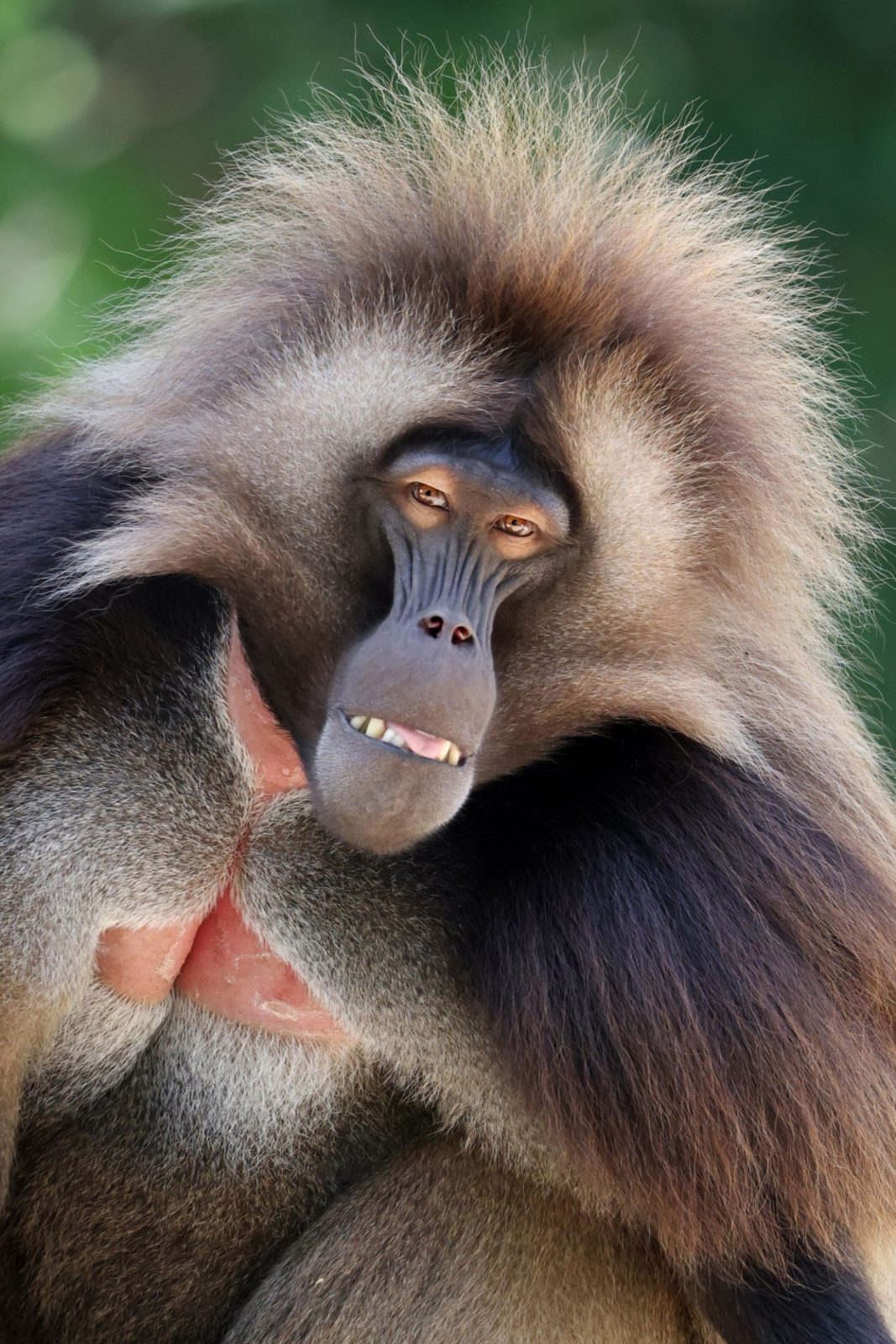
Gelada Baboon
Despite being called a baboon, this is not a baboon species. This species is only found in Ethiopian highlands between 1800m and 4000m above sea level. The genus Theropithecus means beast-ape, which is a strange name, given the species behaviour. It is a close relation of the baboon genus, and like the baboon, spends the vast majority of its time on the ground.
This is essential for this species, as it gets 90% of its nutrients from grasses, which it spends the vast majority of its living time eating.
Males weigh an average of 18.5kg, with females weighing 11kg. Their head and body length is between 50 and 75cm, with a tail measuring 30-50cm.
There are 2 basic social groups, that of bachelor groups and female groups with their young. Males move back and forwards, for when they are in peak health and capable of becoming the dominant mode. The range of Gelada vocalisations are quite impressive, and are similar to the human range. in 1970 there were 440,000, but in 2008, the number was estimated at 200,000.
While this puts the species as least concern, if this rate of reduction in population were to continue, this species would eventually disappear. It is unclear what caused the decline (except that it is probably something related to the human population) and without knowing what has caused the problem, we cannot know if this issue is coming to an end.
Only being found in one area, tourism can become very important for the human population in the area, and therefore give a big incentive for their future protection. Other species that can be seen in the same area, include the Ethiopian wolves. Any links will follow the news section below.